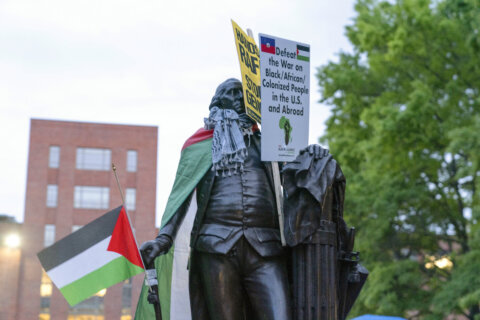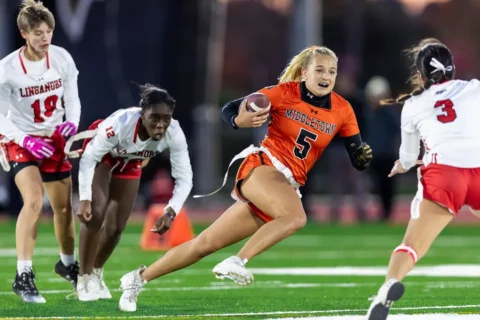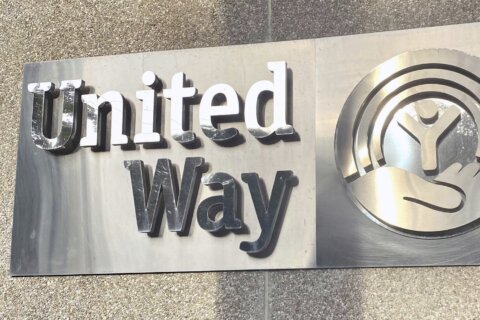As food prices continue to rise, regional food banks are more challenged than ever to provide meals to the communities they serve. During Hunger Action Month, regional food banks are providing simple ways to get involved in the movement to end hunger.
“Maryland was already a pretty expensive state to live in pre-COVID, and obviously, with rising prices, that’s made it more challenging for a lot of families to make ends meet,” said Carmen Del Guercio, president and CEO of the Maryland Food Bank (MFB).
Before the pandemic, MFB bought about 12 million pounds of food annually, and now they are buying about 25 million pounds each year, Del Guercio said.
“We are now paying about 88 cents a pound for those 25 million pounds,” he said. “Pre-COVID, we were paying about 45 cents, so twice the poundage at twice the cost. And you can do the math; it’s a pretty significant increase in our budget every year that we’re having to carry and support this demand.”
MFB’s most recent research report, “Food Insecurity in Maryland,” illustrates how the current economic conditions have prevented individuals and families from achieving economic stability.
“One of the data points we look at is the number of Marylanders who are saying they’re having a hard time making ends meet,” said Del Guercio.
In December 2021, about 8% of Marylanders said they were having financial difficulty, and in May 2022, the report found the number grew to 32%, based on MFB’s analysis of June 2022 U.S. data from the U.S. Census Bureau’s Maryland Household Pulse Survey. Del Guercio said this statistic gives a sense of the magnitude of the increase people were feeling as a result of inflationary pressure.
In addition, the survey noted that in June 2022, 50% of Maryland families said their children were sometimes or often not eating enough because food was not affordable.
During Hunger Action Month, there are a number of ways individuals can support the work of the Maryland Food Bank, which serves all of Maryland except Prince George’s and Montgomery counties, and the Capital Area Food Bank (CAFB), which serves the greater D.C. area — including Prince George’s and Montgomery counties — as well as Alexandria and communities in Arlington, Fairfax, and Prince William counties in Virginia.
One of the easiest ways to support the efforts of our regional food banks is by using social media.
Food drives are helpful and no food bank would turn away people’s donations of canned goods and other non-perishable food items, but a virtual food drive will take their efforts to a new level.
“We are in constant contact with our neighbors to get feedback on the types of food they want, whether it’s in terms of health or culturally preferred,” said Del Guercio. “So what a virtual food drive allows us to do with your dollars is make sure we’re buying the exact products our neighbors need.”
In addition to harnessing the power of on social media, a virtual food drive can also leverage the food bank’s buying power.
“We can turn one dollar into two meals,” he said. “We used to say we can turn it into three meals, but unfortunately, with inflation, we can’t say that anymore. But our buying power allows us to stretch that dollar much further along, so that’s a double whammy there.”
MFB also encourages advocacy as Del Guercio said food insecurity was an issue a lot of people didn’t fully appreciate pre-pandemic
“I think if there’s ever a little bit of a silver lining that came out of the pandemic, it’s the fact that images were being piped into people’s living rooms of long lines at food banks all across the country,” he said, “raising awareness to levels that, probably historically, the industry has not seen.”
As a result, Del Guercio said he’s hopeful there are more people who understand the magnitude of the need, and who will do one of two things or both.
“Advocating to your local legislators to ensure they are promoting programs that are providing support to families in need, and informing the people they interact with every day – their social network – to educate others about the level of need,” he said.
A more traditional way people can help your food insecure neighbors is to volunteer.
MFB and CAFB both welcome individuals, groups and families to help sort and pack food and pitch in on a variety of essential tasks to keep your neighbors fed during this increased time of need across the region.







